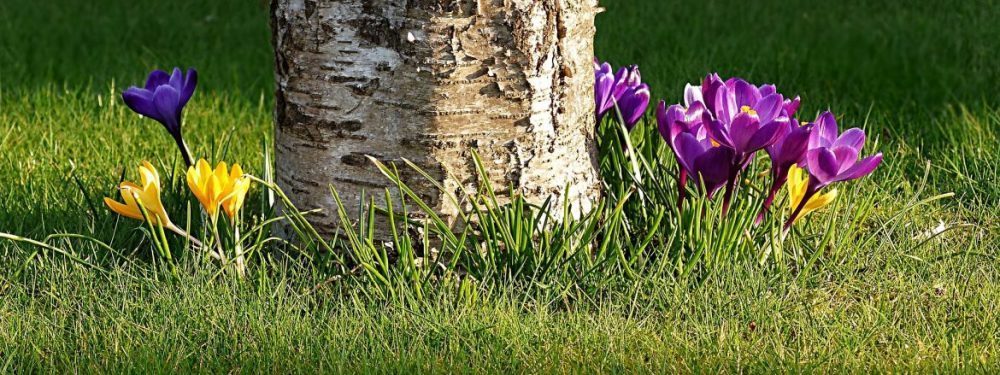
Choosing the Ideal Grass Type for Your Climate and Soil
This is a collaborative post
Are you looking to give your outdoor space the perfect finishing touch? Finding the ideal grass type for your climate and soil can make all the difference – not only with aesthetics but also when it comes to maintenance and longevity. It’s time for an upgrade that will turn a good lawn into a great one.
Whether in a hot and humid environment or a cold and snowy locale, this blog post shares valuable information with helpful tips about choosing the essential elements of healthy lawns. Read on to discover how you can find success in selecting just the right grass type for wherever you may call home.

Best Grass Types for Warm Climate
If your home is in a region with warm temperatures, selecting grasses that thrive under heat and sunlight is key. These resilient grasses are resistant to drought and can withstand the heavy foot traffic that comes with summer outdoor activities. Here are some top contenders:
Bermuda Grass
Bermuda grass loves the sun and has fantastic heat, drought, salt, and foot traffic tolerance. It’s a robust, low-growing grass that can quickly recover from damage, making it ideal for lawns used often.
Zoysia Grass
Zoysia grass is another warm-weather favourite. Known for its ability to withstand high temperatures, it also offers a thick, carpet-like cover resistant to weeds. Though it takes longer to establish, its durability makes it worth the wait.
St. Augustine Grass
St. Augustine grass is a staple in many warm climates. It’s a hardy choice that works well in various soils, including sandy and clay. Its broad, flat blades create a dense turf, and it handles shade better than most warm-season grasses.
Centipede Grass
Centipede grass is a low-maintenance option perfect for homeowners who prefer a hands-off approach. It grows slowly and doesn’t require much fertilization or mowing. Its tolerance for sandy soils and light shade makes it a popular option in coastal regions.
Best Grass Types for Cool Climate
If you live in a region with cooler temperatures, selecting hardy grasses that can withstand cold weather is crucial. You’ll want to choose varieties that tolerate frost, snow, and heavy rains. Here are some recommendations:
Tall Fescue
Tall fescue is one of the most versatile cool-season grasses, with an impressive tolerance for extreme weather and heavy foot traffic. Its deep root system allows it to thrive in various soil types, making it popular.
Kentucky Bluegrass
Kentucky bluegrass is another favourite in cool climates, known for its dense and lush appearance. It’s a hardy grass that can withstand cold temperatures and drought but may require extra maintenance to combat the joint weed invasion.
Fine Fescue
Fine fescue is a group of grass varieties perfect for cooler regions. They’re highly resistant to cold, drought, and shade, making them an excellent choice for areas with varying weather conditions. These grasses also have fine blades that give lawns a soft, delicate look.
Choosing the Right Grass Type for Your Soil
The soil type in your area can also significantly affect how well your lawn will thrive. For example, certain grasses may do better than others if you have sandy or clay soils. Here are some things to consider:
Sandy Soil
Sandy soil is porous and drains quickly, so water and nutrients can easily wash away. Grasses with deep root systems, like tall fescue and Bermuda grass, are recommended for this soil type.
Clay Soil
Clay soil is dense and holds water for longer periods, which can lead to waterlogging and poor drainage. Grass types that do well in clay soils include St. Augustine grass and Kentucky bluegrass because of their ability to tolerate wet conditions.
Loamy Soil
Loamy soil is often considered ideal because it retains moisture and nutrients but drains well. Its balanced sand, silt, and clay composition makes it a versatile option for many types of grass. Zoysia grass and Kentucky bluegrass are excellent choices for this soil.
Peaty Soil
Peaty soil is rich in organic material, which provides plenty of nutrients for grasses. However, it does retain a large amount of water, which can lead to waterlogging. To counter this, choose grass types resilient to moisture, like fine or tall fescue.
Chalky Soil
Chalky soil is alkaline in nature due to its high mineral content, which can sometimes inhibit the uptake of nutrients. Grass types that can adapt to this soil type include Bermuda grass and St. Augustine grass, known for their resistance to varying soil conditions.
Additional Tips for Choosing an Ideal Grass Type
Choosing the perfect grass type is a blend of understanding your region’s climate, knowing your soil type, and acknowledging your personal preferences and maintenance capabilities. However, there are also other important factors to consider that can affect your lawn’s health and appearance. Here are some additional insights to guide your decision-making process:
Consider Your Lawn’s Sunlight Exposure
Every grass type has specific sunlight requirements. Some grasses, like Bermuda grass, thrive in direct sunlight, while others, like St. Augustine grass, can tolerate shade. Evaluate your lawn’s sunlight exposure throughout the day to help determine which grass type is best.
Evaluate Your Lawn’s Foot Traffic
If your lawn is frequently used for activities and gatherings, choose a grass type known for its wear resistance, like Bermuda grass or Tall fescue. However, if your lawn is more for viewing than for use, a grass type with a lush appearance, like Kentucky bluegrass, could be a better fit.
Think About Your Maintenance Preference
Each grass type also has varying maintenance needs. Some require frequent mowing and fertilizing; others can thrive with minimal care. If you prefer a low-maintenance lawn, consider grass types like Centipede grass. However, if you enjoy lawn care, you might opt for a grass type that requires more attention, like Kentucky bluegrass.
Consider Your Lawn’s Irrigation
Different grass types have different water needs. Some grasses are drought-resistant, while others require regular watering to stay healthy. Consider your region’s rainfall patterns and your ability to provide additional irrigation if necessary when choosing your grass type.
Think About the Aesthetics
Finally, consider the look you want for your lawn. Different grasses have different blade widths, growth patterns, and colors. Zoysia grass can be a good choice for a carpet-like lawn, while grasses like Fine fescue can give your lawn a delicate, fine-bladed look.
Final Thoughts
The ideal grass type for your climate and soil is essential for a beautiful, healthy lawn. Consider all these factors to help you make an informed decision that will give you a gorgeous lawn that thrives in its environment. Remember, no matter which grass type you choose, regular maintenance and care are crucial for keeping your lawn looking its best. For more information on lawn maintenance, contact a reliable company that specializes in landscaping services and lawn care.





